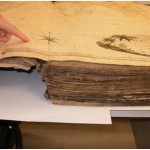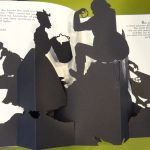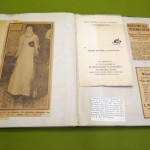 On October 18, internationally acclaimed New York Times bestselling author Steve Berry and the Smithsonian Libraries will join forces to present a writers’ workshop, Lessons from a Bestseller, to teach general writing skills while benefitting the Rare Books, Special Collections and Preservation Programs at the Smithsonian Libraries.
On October 18, internationally acclaimed New York Times bestselling author Steve Berry and the Smithsonian Libraries will join forces to present a writers’ workshop, Lessons from a Bestseller, to teach general writing skills while benefitting the Rare Books, Special Collections and Preservation Programs at the Smithsonian Libraries.
Smithsonian Libraries and Archives / Unbound
–This post was contributed by Allison Brice, American Art and Portrait Gallery Library intern.
I often joke with those who ask me about my academic studies that I am getting a degree in ‘old stuff’. With a major in history and two minors in art history and medieval studies, I must admit that I find anything from the last half-century rather boring. So when my supervisor at the American Art and Portrait Gallery Library told me to go down into the rare books section and find some ‘old stuff’ to put up for our Adopt-a-Book project…well, I was in heaven.
 This post was written by Alyssa Penick, Intern at The Dibner Library of the History of Science and Technology.
This post was written by Alyssa Penick, Intern at The Dibner Library of the History of Science and Technology.
The Dibner Library for the History of Science and Technology recently acquired a nineteenth-century navigation atlas, The Marine Atlas, or a Seaman’s Complete Pilot for all the Principal Places in the Known World, which was published in London in 1826 by John William Norie. Currently under restoration, this large folio contains forty copperplate engravings of marine charts and depicts every ocean, sea, and coastline then known. The Dibner’s copy of The Marine Atlas is the seventh edition of the atlas and was bound in New York by Henry Spear in 1856. No other copies of Norie’s Marine Atlas are held by public collections, making this addition to the library particularly exciting.
 Over the last century, photography has evolved as much as, if not more than, any technology in wide-spread use. From the first experiments with light and the various chemical compounds used in creating daguerreotypes to Instagram and jpegs, photography has had more costume changes than Madonna. One of my favorite sub-collections in the Smithsonian History Art and Culture (SHAC) digital collection, housed at the Internet Archive, traces the early development, theory, and practice of fine art photography.
Over the last century, photography has evolved as much as, if not more than, any technology in wide-spread use. From the first experiments with light and the various chemical compounds used in creating daguerreotypes to Instagram and jpegs, photography has had more costume changes than Madonna. One of my favorite sub-collections in the Smithsonian History Art and Culture (SHAC) digital collection, housed at the Internet Archive, traces the early development, theory, and practice of fine art photography.

This post was written by Colette Leung, a 2012 summer intern at the Smithsonian National American History Library (NMAH Library).
Hello! My name is Colette, and this summer 2012, I had the opportunity to work as one of the National Museum of American History Library’s summer interns. I am currently working towards my Master’s in Library and Information Science, as well as a second Master of Arts in Humanities Computing, both at the University of Alberta, in Edmonton, Canada. I have a lot of interest in observing how digital technology and print books are shaping libraries, and although I have been lucky enough to work on many different digital projects, I was very excited to start working on working on this internship that is offered through the Alberta-Smithsonian Internship Program.

Many of the artists’ books in the Smithsonian American Art & Portrait Gallery Library’s collection tell stories—from personal struggles with addiction, to pictorial descriptions of how to create a human salad, to universal stories of historical conflicts, such as Kara Walker’s book “Freedom: A Fable.”
 The Smithsonian Libraries still has several internship projects available for fall of this year and spring of 2013. Although these projects are unpaid, we are happy to work with your school to help you obtain credit. Below are a few brief descriptions. Please see our website (http://library.si.edu/internships) for more details and application instructions.
The Smithsonian Libraries still has several internship projects available for fall of this year and spring of 2013. Although these projects are unpaid, we are happy to work with your school to help you obtain credit. Below are a few brief descriptions. Please see our website (http://library.si.edu/internships) for more details and application instructions.

